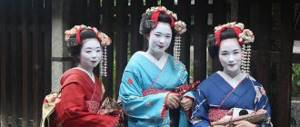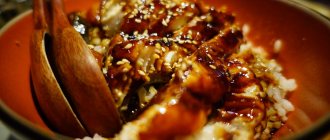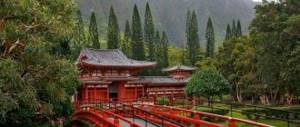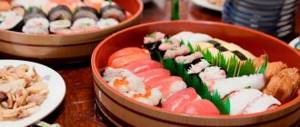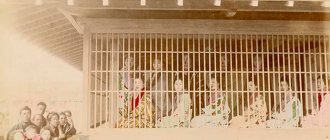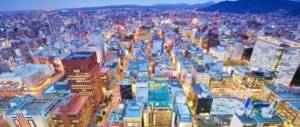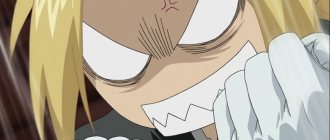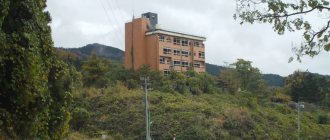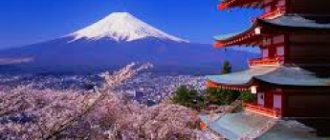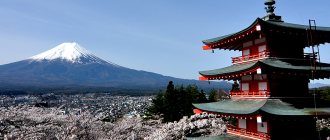Pilgrims who came to the Yasaka Shrine 500 years ago and settled for their stay near the holy place did not even suspect that over time the Gion geisha quarter in Kyoto would appear here. Women whom others call geisha consider themselves geiko because geisha in Japan means “person of art,” and geiko is a woman who devotes herself to the arts. And then there are geiko students, like apprentice geishas, who are called maiko.
2. Geiko student - Maiko
The Gion geisha quarter in Kyoto is divided into two parts: Gion-higashi and Gion-kobu. White-faced women work in one of them, and live in the other. The place where Japanese beauties work is called o-chaya, that is, a tea house.
Music creates a festive atmosphere
The sounds of gongs, flutes and drums echo through the evening Kyoto, and children's songs can be heard sung while selling timaki - rice balls wrapped in bamboo leaves. The eve of the Gion festival is called yoiyama, and the pre-holiday activities continue for three evenings, which are called yoiiyoiyama (July 14), yoiyama (July 15), yoiyama (July 16).
Gion-bayashi orchestra playing traditional music during the Gion festival
Shijo, one of Kyoto's main streets and home to large department stores, also changes dramatically during the holiday. There are many luxuriously decorated festive hoko and yama floats on display, including the Naginata-hoko, which reaches a height of 25 meters. Carts also stand on the streets that cross the city from north to south - Muromachi, Simmati. Nearby there are shops selling holiday goods - fans, tenugui towels, amulets.
Shimmachi Street is bustling with activity, with the Minami Kannon-yama cart (left) visible in the background. The shops sell tenugui towels, fans, amulets, each quarter has its own (right)
Evening falls and the paper lanterns that decorate the yama and hoko carts are lit. People dressed in traditional yukata clothing fill the streets of Shijo and Karasumaru, which become a pedestrian zone. At 10 pm, the Hiyori-kagura performance begins, when Hayashi musical groups from different neighborhoods march through the streets in orderly rows, and people in their hearts hope for clear weather on the day of the holiday. Tourists who have come to watch the festival wander around, listening to the overlapping sounds of different orchestras.
The musicians march towards the city center and will disperse to their respective neighborhoods after midnight
Shopping in Shijo-Dori
In Kyoto you can visit temples, ancient culture and architecture, but of course also modern Japan. So you can head to Kyoto for the shop 'till you drop phenomenon. Shijio-Dori is a relatively new street with many luxury department stores, shops and boutiques that certainly shouldn't be missing from our top attractions.
Shijio-Dori is a street that ends at the relatively new Kyoto train station. It starts there with a giant glass and steel complex that houses several shops. If you go outside, you will arrive at Shijio-Dori and you will see department stores to the left and right of the street. With this new shopping center, the city of Kyoto has everything to offer tourists.
You can start shopping at Daimaru department store in the cosmetics, jewelry and fashion departments. Afterwards, you can stroll west to visit the stores of big fashion brands such as Gucci, LV, Fendi and of course the super-traditional gift shop chains (wink). Afterwards you enter the largest department store, Takashimaya. This department store, in partnership with Koto+, which is located across the street, is known for its focus on a young audience. Here you can find modern clothes, fashion paraphernalia and trendy fun restaurants and bars.
Food on the shopping street
Most restaurants and sushi bars can be found on the upper floors of department stores. Here you can choose from a variety of menus, so you can find your "dose" of fast food, sushi, noodles or just a Western steak.
A spectacular spectacle - the main procession of Gion
The morning of July 17th arrives. All the shops that stood everywhere have already been removed, and there is silence on the streets. The long-awaited time for the main procession of yama and hoko carts is approaching.
The Kita-Kannon-yama cart passes along Simmati Street. Participants in the festival in white haori clothes pull her by the ropes. Its height is more than 20 meters, and there are people sitting on the roof of the cart who make sure that it does not touch the wires
There are two types of carts - yama and hoko. The pit does not have a decorated roof; compositions of dolls are created on it. Hoko is a much larger cart with large wheels and a roof. Hayashi musicians sit under the roof and play festive music as the float moves in the procession. However, there are also pits that resemble hoko, like Kita-Kannon-yama, which has wheels and a roof.
Yama carts have puppet compositions, like the Kikkyo-yama cart (left). A man with a fan sits on a Hoka-hoko cart. His job is to set the pace of movement (in the center). The Fune-hoko cart is shaped like a ship (right)
Yamahoko procession on Shijo Street
A procession of thirty-three yama and hoko carts slowly moves through the city, with gion-bayashi bands setting the pace. Particularly noteworthy is the way the huge hoko negotiate turns. Their axles are stationary, so they place chopped bamboo under the wheels, on which the wheels slide, and thus turn the cart 90 degrees. The process is controlled by an ondotori, who shouts “yo-itose!” so that those pulling the cart apply force at the same time. Those watching this exciting spectacle held their breath... The turning of the carts at the crossroads, tsujimawashi, is one of the main spectacles of the holiday.
Kita-Kannon-yama cart commits tsudjimawashi
Maiko (apprentice geisha), dressed in yukata, also came to the celebration
Festival Gion Matsuri
In addition to the daily activities in Gion, every July there is a giant festival that attracts millions of Japanese, namely the Gion Matsuri.
This festival is known for its beautiful carnival floats and, of course, traditional performances by geishas and other Japanese musical talents. It's a busy festival, but definitely worth visiting Kyoto in July.
How to get to Gion
The Gion area is located in the center of Kyoto, making it easy to get to. You can take a huge number of buses past Gion, your best bet is to ask a local or the driver of the bus that goes first to Gion.
The meaning of the holiday is to pacify the spirits of the dead
Gion Matsuri is considered Japan's most spectacular summer festival. Its history dates back to events 1100 years ago.
In Kyoto, which had long been the capital of Japan, infectious diseases often raged in the summer, claiming the lives of many people. The Kamo River, which flows through the city, is known for its restless nature, and with the onset of the summer rainy season, the tsuyu flooded every year, spreading throughout the city, and the stagnant dirty waters became the cause of epidemics.
It was not only the capital that suffered from natural disasters. In the sea in the Sanriku region in the northeast of the country in 869, a strong earthquake occurred, the so-called. "Earthquake of the Jokan Years." The magnitude was greater than 8.4, and it is believed that the scale of destruction caused by the tsunami generated by the earthquake was comparable to the Great East Japan Earthquake. There were also strong eruptions of the Fuji and Aso volcanoes... Such natural disasters, which followed one after another, were explained by people at that time as a curse from the spirits of people who died a violent death.
Angry onryo spirits had to be appeased throughout Japan. The Gion Festival originates from the “gatherings (to appease) the spirits” (goryoe) at the Gion Shrine (now Yasaka Shrine), which were held precisely in order to appease and calm the spirits.
Yoshida Kojiro, director of the Gion Matsuri Yamahoko Association, says: “A truly important role in the festival is played by the three mikoshi palanquins of the Yasaka Shrine. During the Shinkosai (Divine Visitation Festival) ceremony held on July 17, three deities, including Susanoo no Mikoto, are placed in sacred palanquins and taken to Otabisho (a place where carriages are left for a while). On July 24, Kankosai (Divine Return Festival) is held, when deities are returned from Otabisho to Yasaka Shrine. Through these two holidays, one cleanses oneself from filth and prays for deliverance from infectious diseases.”
The sacred mikoshi palanquin of the deity Susanoo no Mikoto leaves the Yasaka Shrine (left). The mayor of Kyoto makes a speech in front of three palanquins (right)
Initially, the yama and hoko procession was held before the Shinkosai holiday and after the Kankosai holiday, thus greeting and seeing off the deity, but now it is held only before Shinkosai.
History of the Inari Shrine Area
Fushimi Inari-taisha is a temple area that extends over approximately 4 square kilometers on Mount Inari. You can walk everywhere and most of the trails lead under the beautiful red and black gates. The tori placed in the temple area were donated by Japanese companies to thank the gods for their prosperity. This process began in 711 and continues to this day and is part of the Shinto faith.
The Inari Shrine area was first described in literature in 711. At this time, the temple complex was still located on Inariyama Hill in southwest Kyoto. Since 816 it has been moved to its current location. The first real shrines were installed at the request of Emperor Murakami in 965. Kyoto was then the capital of Japan and an important political and sacred city.
The complex was actually opened in 1499 and was completed with gates from Japanese companies. Over the years, the complex has turned into a real cultural monument, which is important not only for the residents of Kyoto, but also for all of Japan. There are currently over 32,000 holy gates, which show different paths to the temple's shrines such as Okumiya and various tsuki. In addition, they all have red tops and black bottoms, the so-called “socks”.
Serial foot licker arrested in Kyoto.
Yama and hoko are the pride of the people of Kyoto
The yama and hoko procession used to play a secondary role, but the people of Kyoto brought it to the center of the festival. When Kyoto once again became the center of political power in the country during the Muromachi period (1336-1573), merchants and industrialists, sake sellers and pawn shop owners (in the current sense
– financiers) were gaining strength. Parishioners began to bring carts from their neighborhoods into the procession. During the turmoil of the Onin years (1467-1477), which broke out due to a dispute over the succession to the title of shogun of the ruling house of Ashikaga, Kyoto turned into a scorched plain, and the Gion festival was not held for some time, but the inhabitants of those quarters revived it, and since then Gion has truly become a holiday for the townspeople.
During the Azuchi-Momoyama (1573-1603) and Edo (1603-1868) periods, with the development of overseas trade, yama and hoko carts became even more luxurious.
Ishikawa Taku, chairman of the Kita Kannon-yama Preservation Society, also says that at one time residents competed to see which neighborhood had the most beautiful cart, and competed in the luxury of decorations.
He says: “The merchants of Kyoto, as a rule, were thrifty people and led modest lives, but they gave willingly on holidays. In our Rokkaku quarter lived rich merchants - Mitsui, Matsuzakaya, they invested money in decorating carts, ordering fabrics from afar - from Tibet and Persia. The handicraft jewelry is also extremely luxurious. People of that time could rarely see something like this. This showed local hospitality - inviting people who helped organize the Gion Matsuri and sharing the joy with them.”
The carts are richly decorated
Due to the fact that wealthy residents competed to see who could give more money to decorate the carts, valuable decorations from all over the world were collected for them, and therefore they are called “museums on wheels.” Luxuriously decorated carts are also a source of pride for the people of Kyoto. Gradually, more and more people gathered for the holiday in order to at least once look at these wonderful carts.
Gion Matsuri served as the prototype for many summer festivals held throughout the city. There are many of them throughout the country, such as the Hakata-Gion Yamakasa holidays in Fukuoka, the Takayama Matsuri in Takayama Prefecture. Gifu, Mikumayama Matsuri in Takayama Prefecture. Toyama and many others.
Other interesting places in Kyoto
Nijo Castle
Palaces and castles
- Nijo Castle was once a powerful shogun (military dictator) of Japan.
- The Imperial Palace in Kyoto, where the imperial family lived until 1868.
- Villa Shugakuin was built by the retired Emperor Gomitsuno (1656) in the suburbs of Kyoto.
- Villa Katsura was also an imperial residence and has several beautiful Japanese gardens.
Public places
- Surrounding the beautiful Kiyomizudera Temple is the Higashiyama Historic District.
- Arashiyama is a beautiful tourist area on the outskirts of Kyoto.
- Of course, you can shop in Kyoto on Shijo-Dori Street.
Temples
How do you like this, Elon Musk? Japanese monks will build a new temple... in space!
- Kiyomizudera, which is almost entirely made of wood, especially the giant terrace, is very impressive.
- Sanjusangendo has no less than 1001 statues in realistic format.
- Nanzenji Temple is entirely dedicated to the establishment of Zen, surrounded by a beautiful rock garden.
- Ninnaji Temple was once the home of an imperial couple.
- For a beautiful stone garden, you can go to Ryoanji Temple.
- Byodion Temple is famous for its beautiful garden around it.
- In autumn, you can go straight to Tofukuji Temple because the forests around it have beautiful autumn colors.
Parks and Japanese gardens
Kokedera or Saihoji Temple, Kyoto
Kokedera, also known as Saihoji, is probably one of the most beautiful Japanese gardens in the world . Kokedera means "temple of moss", it received this name because moss grows everywhere.
Views: 3,366
Share link:
- Tweet
- Share posts on Tumblr
- Telegram
- More
- by email
- Seal
Kyoto's hospitality is shown during the holiday
The hospitality of the people of Kyoto is also evident in the Byobu Matsuri festival. During the pre-Yoyama holiday period, residents of the neighborhoods participating in the holiday took out folding painted byobu screens and other works of art, carefully stored in the pantry, to show to relatives and friends. Now such items are already on display for all tourists who come to see the Gion Matsuri.
In Kita Kannon Yama there is also a house where byobu screens are displayed (left). Tourists admire the works on display at the Byobu Matsuri (right)
Ishikawa Taku says that Yoiyama is a special time for everyone living in Kyoto. To please guests, things that are usually impossible to see are put on display for inspection.
Some features of Kyoto cannot be experienced without attending the Gion festival, which demonstrates the spirit of hospitality of the local residents.
Photos: Nakano Haruo
(Article in Japanese published September 13, 2013)
Fushimi Inari-Taisha Shrine
According to many Japanese, the most photographed place in Japan is Fushimi Inari-taisha. This place is famous all over the world for its beautiful red wooden arches/gates called Torrii. Torrii are the holy gates leading to the temple. Fushimi Inari-Taisha is a UNESCO World Heritage Site and is one of the must-visit attractions in Kyoto.
Besides being the most photographed place in Japan, it is also the most impressive place in Kyoto. This is a huge temple complex that is located on the slopes of a mountain and consists of 32,000 holy gates (torii). You can walk under these sacred tori and enter different temples.
Annual events
Miyako Odori
In Geiko
and
Maiko
Gion perform annual public dances, as do all five geisha districts in Kyoto.
The oldest ones date back to the Kyoto Exhibition of 1872. The most popular of these is Miyako Odori
, literally "Dances of the Old Capital" (sometimes called "Cherry Blossom Dances"), choreographed by geisha Gion Kobu, dating back to 1872. The dances take place from April 1st to April 30th each year during the high season. cherry blossom (sakura) season. Spectators from Japan and all over the world attend events, from "cheap" seats to tatami floor mats, to reserved seats with a small tea ceremony in advance. Gion Higashi performs a similar dance in early November around autumn leaves, known as Gion Odori; it is newer and has fewer appearances.
In popular culture
- Gion is the setting of many of the Arthur Golden novels Memoirs of a Geisha.
- Gion Kobu was also where Mineko Iwasaki lived and did business as a geiko, as mentioned in her autobiography Geisha of Gion.
- Gion is the setting of several films by Kenji Mizoguchi, including: 1936 The Gion Sisters
(祇園の姉妹
Gion no kōdai
) - 1953 Geisha
AKA
Gion Music Festival
(祇園囃子
Gion Bayashi
)
